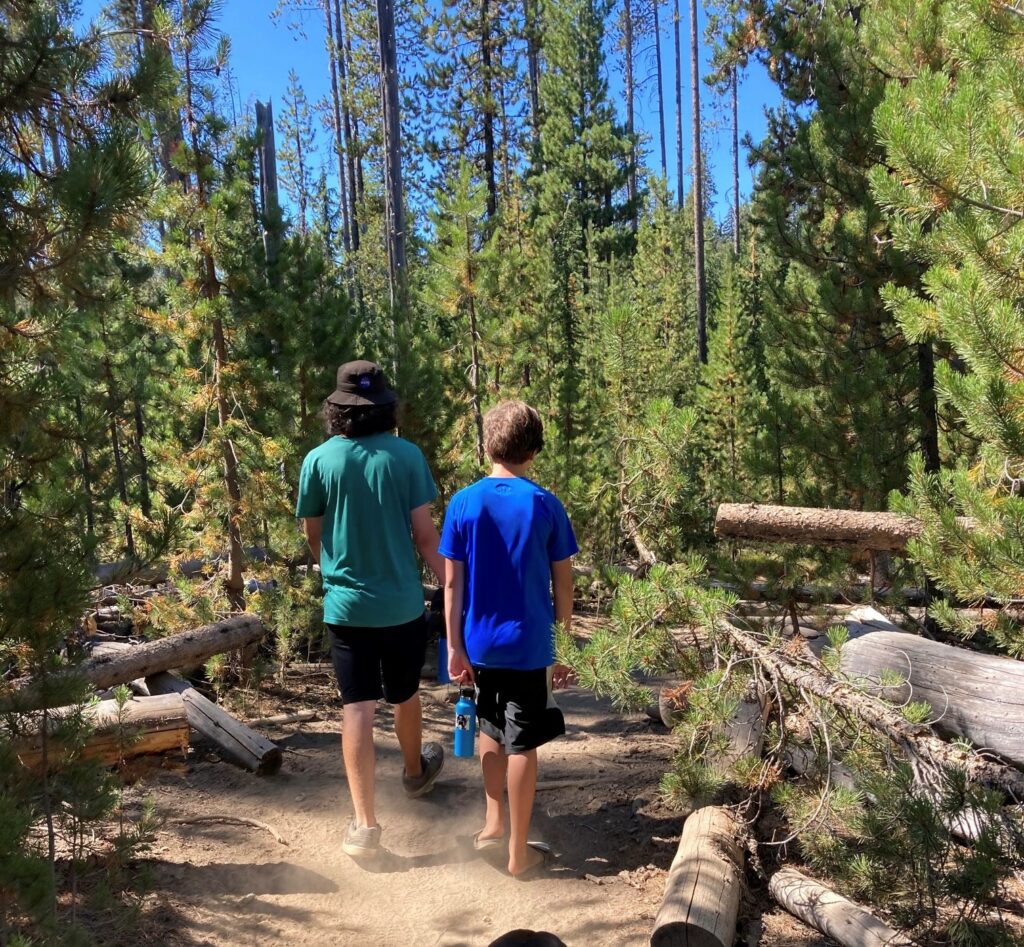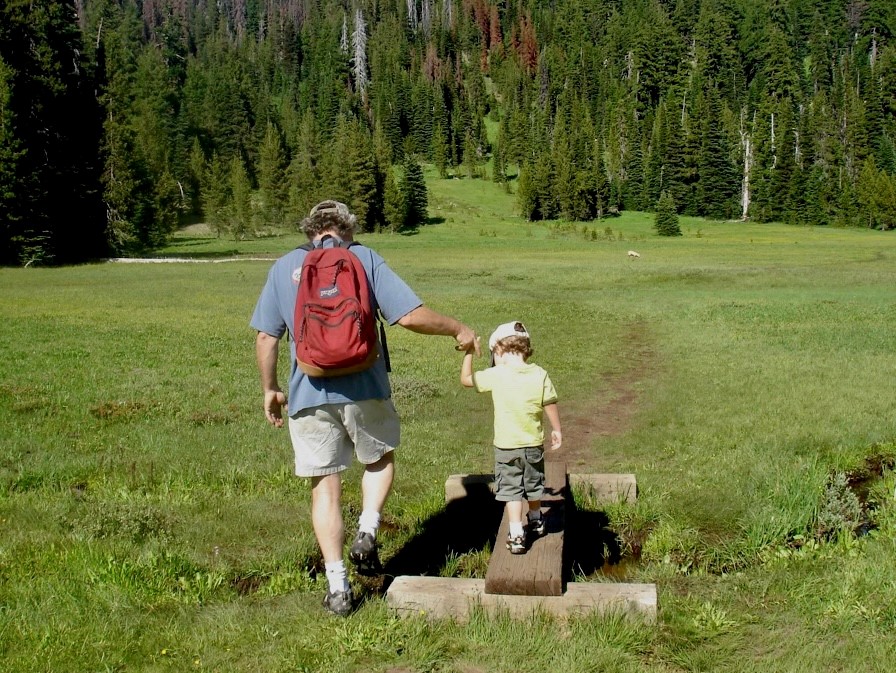Hiking is a popular adventure and can be a great way to exercise while also relaxing. With trails ranging in difficulty, length and landscape, there’s a hike out there for everyone. Whether your speed is a short hike to explore an urban area, a few hours of trekking in the wilderness to a lake or waterfall, or a multi-day, long-distance hiking adventure away from the crowds, you can walk your way to a wide range of extraordinary places.
A multitude of options can be found from a simple internet search asking about “hiking trails near me.” You can find maps, reviews from past hikers, and all the details you need to prepare for your outing of choice. Even with good, advanced planning, however, any hiking adventure can lead to injuries.

What are the most common hiking injuries?
Knowing what to watch for and what to do in the case of an injury can be the difference between a season cut short, and a season full of adventures. With the most common hiking injuries, rest, icing, and changing your activities for a short period of time can allow injuries to heal so you can get back on the trail and keep exploring! Below are some of the most common injuries that we see as physical therapists.
- ANKLE TWISTS/SPRAINS
Ankle injuries occur most often due to a misstep on uneven terrain, which leads to “rolling” an ankle. This can happen on a rock, a tree branch, or even just on a flat surface. A twisted or sprained ankle can cause intense, immediate pain and/or constant low-grade pain that continues throughout the rest of your hike and afterward. You may also notice swelling and discoloration of your ankle where the pain is located.
- If you roll your ankle and find that you are unable to walk even a couple of steps without debilitating pain, please see a medical provider ASAP.
- If you seem to have recurring ankle twisting or sprains, consider different hiking shoes or hiking boots and opt for something with good ankle support. A brace or tape can also help stabilize your ankle.
- If you’re concerned about your ankles and want to learn more about what can be done to improve your strength and balance, a physical therapist can work with you to assess your situation and create a personalized plan of care to improve your instability and expedite your return to hiking.
- IT BAND SYNDROME
IT band pain can come on during or after your hike. Pain is usually felt in one leg, most commonly on the outside of your hip. If left untreated, the pain can travel down the outside of your thigh, and you can experience pain on the outside of the knee.
- If you feel like you have stressed or injured your IT band, stretch the outside of your leg by standing close to a wall and leaning your “injured” hip toward the wall while bending your shoulder away from the wall. If done regularly while also modifying your activities for a couple of weeks, the pain should dissipate.
- In addition to stretching your IT band, consider self-massage to the area where you are experiencing discomfort. Foam rolling can provide relief, though it can be painful to do depending on the extent of your injury. Another option is to use a myofascial stick (or a rolling pin) to roll out your IT band.
- If your pain gets worse, or you can’t seem to find any relief, please call the Therapeutic Associates clinic nearest you or another medical professional who can evaluate your injury and determine the best course of treatment.
- ACHILLES TENDONITIS
Achilles tendon pain usually comes on gradually. You’ll notice an increase in swelling around your ankle – especially on the back – and pain gets worse when you increase your activity. This hiking injury usually comes on when a person tries to do too much (too many miles or up a very steep hill) and their body is not used to or prepared for it. Pain or stiffness is most often present in the mornings and/or when you start an activity. Your range of motion in the ankle under stress can be limited and the Achilles tendon itself can be tender to the touch.
- An easy way to stretch your Achilles is by using a strap (a belt or folded towel will work too), placed behind the balls of your feet and stretching your toes toward your head.
- WRIST SPRAINS
The most common cause of a wrist sprain is falling. We have a tendency to react to falling by sticking our arms and hands out to catch ourselves. If you land just right on your wrist, it can cause an injury. You will notice pain in your wrist, decreased wrist movement, swelling, and/or discoloration. Immediately try to rest your wrist, apply ice, and modify your movement into pain-free ranges. If symptoms do not improve and you’re still in pain after your hike, you should consider reaching out to your local physical therapist or other medical provider.
- MUSCLE STRAIN
The hamstring, calf, and quad muscles are the usual culprits when it comes to muscle strain during or after a hike. Your pain occurs/increases when you try to move that part of the leg, and your pain lessens or goes away with rest.
- If you feel a muscle strain, begin to address it by stretching the muscle, but be sure not to stretch to a point of pain.
- Only continue your hike if it’s pain-free. Otherwise, it’s time to turn back toward the trailhead. Once you’re home, opt for other exercise that is pain-free.
- Consider following the PRICER method for injury treatment.
Self-Treatment of Injuries with the PRICER Method
- Protection – Protect the injured area until it can be evaluated. This may include an Ace wrap, taping, or bracing.
- Rest – Stop or take a break from the activity that is causing your pain or soreness.
- Ice – Apply ice to the affected area for 10 to 20 minutes several times a day. Put a towel between your skin and the ice pack to avoid skin irritation. Allow the skin temperature to return to normal before icing again (40 to 60 minutes).
- Compression – Wrap the injured area with an elastic bandage (such as an Ace wrap) to help decrease swelling. If you experience an increase in pain, numbness, tingling, swelling, or coolness below the elastic bandage, it may be wrapped too tight.
- Elevation – Elevate the injured or sore area above the level of your heart while applying ice.
- Referral – Medical assistance should be sought as soon as possible to determine the full extent of the injury. A physical therapist can develop a treatment plan for full recovery and return to sport.
Many of these injuries can be resolved independently of medical intervention in a few weeks with rest and modification of activities. It is important to keep up with activity and movement that is pain-free as you heal.
If you sense something else might be at play in why you got injured or feel that a more serious injury might be present, call us right away to schedule an evaluation. If your pain and other symptoms do not lessen or resolve within a timely manner (1-2 weeks) please contact your physical therapist, who can work with you and provide the most optimal healing environment.

Physical therapists can work with you to ensure you are taking the right steps to allow your injuries to heal, while also teaching you how to continue with your daily activities. Remember, you have direct access to your choice of physical therapist. This means we can evaluate and treat you, no referral needed.
So, if the trails are beckoning, then lace up your shoes and get out there. Remember, however, it is important to adequately prepare for every hiking adventure.
Your path to physical therapy starts here.
Your goals matter. Physical therapy can help you reach them. Our experts are dedicated to providing patient-centered care, utilizing a hands-on treatment approach, and maintaining compassionate and fun support teams. Our passion is to help every patient live an active, pain-free life.


